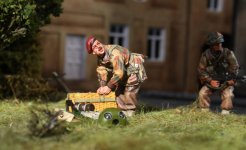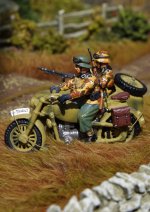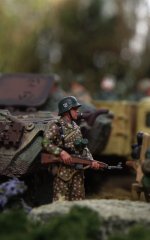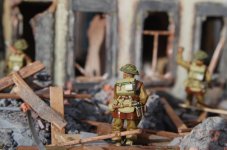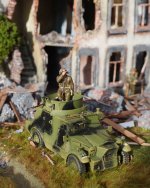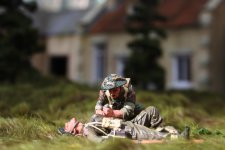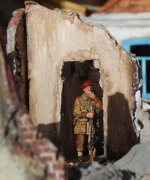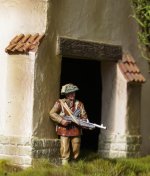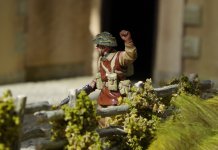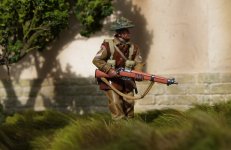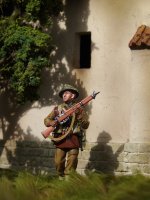You are using an out of date browser. It may not display this or other websites correctly.
You should upgrade or use an alternative browser.
You should upgrade or use an alternative browser.
Battle for Arnhem.... (3 Viewers)
- Thread starter panda1gen
- Start date
panda1gen
Lieutenant Colonel
- Joined
- Jul 29, 2005
- Messages
- 7,376
Ref: Arnhem - 1944: The Airborne Battle by M. Middlebrook
The parachute-dropping zone to be used, DZ-Y, was Ginkel Heath, which was completely open heath land ......
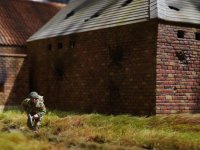
...... with thick woodland on three sides.

The main Amsterdamseweg leading to Arnhem – more than eight miles away — lay on its northern side.

In addition to the King's Own Scottish Borderer companies which had been attempting to keep the Germans away from the heath, Lieutenant Hugh Ashmore's platoon of the Independent Company had set up its beacon and marker panels .....
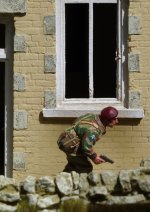
... and the advanced parties of the 4th Parachute Brigade were ready to set off different-coloured smoke canisters at their respective rendezvous points on the edge of the heath.
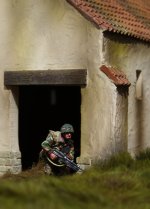
All of these men had been forced to wait without news for four hours since the expected time of the second lift arrival.
The parachute-dropping zone to be used, DZ-Y, was Ginkel Heath, which was completely open heath land ......

...... with thick woodland on three sides.

The main Amsterdamseweg leading to Arnhem – more than eight miles away — lay on its northern side.

In addition to the King's Own Scottish Borderer companies which had been attempting to keep the Germans away from the heath, Lieutenant Hugh Ashmore's platoon of the Independent Company had set up its beacon and marker panels .....

... and the advanced parties of the 4th Parachute Brigade were ready to set off different-coloured smoke canisters at their respective rendezvous points on the edge of the heath.

All of these men had been forced to wait without news for four hours since the expected time of the second lift arrival.
Terp152
Major
- Joined
- Sep 17, 2009
- Messages
- 6,495
In the 1970s, yes I'm that old, I flew with the 314th Tactical Airlft Wing, which traced it's lineage to the 314th TCG. And we flew out of East Anglia, RAF Mildenhall. This was 30 yrs after the war and you could still the outlines of scores of airfields even though many had been returned to agriculture and the runways removed.Ref: Arnhem - 1944: The Airborne Battle by M. Middlebrook
The plan for the second lift, as far as Arnhem was concerned, was that the balance of the 1st British Airborne Division, mainly the 4th Parachute Brigade Group, would be flown in as early in the day as possible. Take-offs were planned for soon after 7.0 a.m. Unlike the first lift, the American parachute aircraft would fly in first — 123 C-47s and three C-53s. These would be provided by the 314th and 315th Troop Carrier Groups based at Saltby and Spanhoe respectively.
View attachment 348894
Most of the RAF's 38 and 46 Groups would be dispatched once again; 296 aircraft would tow 281 Horsas and 15 Hamilcars (see below) ......
View attachment 348891
...... containing the balance of the division's guns, vehicles and infantry, including twenty-five glider loads from the first lift that had force-landed in England the previous day.
View attachment 348892
Also from the glider lift were ten Horsas from Manston carrying the first element of the Polish brigade to fly to Arnhem - mainly an anti-tank troop - and four Horsas from Harwell with the two RAF radar warning teams aboard.
Thirty-three further aircraft, Stirlings of 295 and 570 Squadrons from Harwell, would carry out the first of the daily parachute resupply drop for the units already landed at Arnhem.
It would be another day of massive air operations, with nearly 2,500 aircraft involved in Operation 'Market' flights. It is an interesting point that, while the Polish brigade was still waiting to fly to Arnhem, 110 B-17 Flying Fortresses of the 8th US Air Force were flying that day from England in a last attempt to drop supplies to the dying Warsaw Uprising, in support of which the Polish brigade had originally been raised.
View attachment 348893
panda1gen
Lieutenant Colonel
- Joined
- Jul 29, 2005
- Messages
- 7,376
Thank you for your input on this and for your service. I looked the station up and was going to copy elements of the text, but feel that the web reference (should anyone be interested) was more appropriate, as it is so comprehensive. I found it an interesting read, thanks.In the 1970s, yes I'm that old, I flew with the 314th Tactical Airlft Wing, which traced it's lineage to the 314th TCG. And we flew out of East Anglia, RAF Mildenhall. This was 30 yrs after the war and you could still the outlines of scores of airfields even though many had been returned to agriculture and the runways removed.

RAF Mildenhall - Wikipedia
A good example of UK/US cooperation over the decades?
panda1gen
Lieutenant Colonel
- Joined
- Jul 29, 2005
- Messages
- 7,376
Ref: Arnhem - 1944: The Airborne Battle by M. Middlebrook
German forces were also in the vicinity. Probably they did not know that this area was to be used for the coming parachute drop but believed that the British activity around the heath was part of the eastward defence of the first day's landing area.
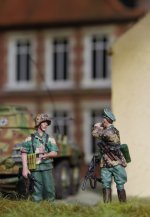
The Dutch SS battalion's HQ and two of its companies were at the north-east corner of the heath, where the King's Own Scottish Borderers had been forced away from the dropping zone.
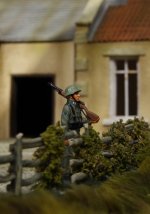
The engines of the C-47s were heard approaching, and the first parachutists, men of 156 Battalion, started to jump.
The 10th Battalion's Advance Party under Lieutenant Sammy Carr started to move towards the German-occupied Zuid Ginkel Cafe near their battalion's RV.
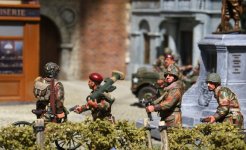
In the woods at the southern end of the heath, men of HQ and Support Companies of the KOSB started a sweep through the trees to clear the Germans there who had opened fire on the parachutists. It was a fierce fight.
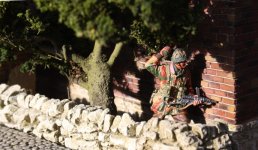
The Germans hit some of the parachutists and set the heath on fire with mortar bombs.

German forces were also in the vicinity. Probably they did not know that this area was to be used for the coming parachute drop but believed that the British activity around the heath was part of the eastward defence of the first day's landing area.

The Dutch SS battalion's HQ and two of its companies were at the north-east corner of the heath, where the King's Own Scottish Borderers had been forced away from the dropping zone.

The engines of the C-47s were heard approaching, and the first parachutists, men of 156 Battalion, started to jump.
The 10th Battalion's Advance Party under Lieutenant Sammy Carr started to move towards the German-occupied Zuid Ginkel Cafe near their battalion's RV.

In the woods at the southern end of the heath, men of HQ and Support Companies of the KOSB started a sweep through the trees to clear the Germans there who had opened fire on the parachutists. It was a fierce fight.

The Germans hit some of the parachutists and set the heath on fire with mortar bombs.

panda1gen
Lieutenant Colonel
- Joined
- Jul 29, 2005
- Messages
- 7,376
The KOSB Support Company commander, Major Henry Hill, was killed. This brought to two officers and at least thirteen men the KOSB's fatal casualties in their attempt to keep the dropping zone clear of Germans.
The first men jumped at 3.09 p.m., and the entire drop would be over in nine minutes, because the American formations had closed right up. Seven men would not be able to jump because they were injured in their aircraft, became entangled in static lines or fell over as some of the American pilots weaved to avoid the ground fire.
The best estimate of the numbers of men who actually jumped is 1,914.
It was an opposed drop.

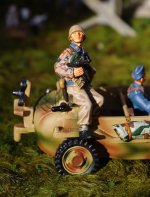
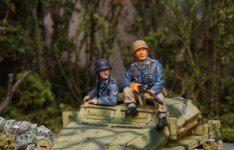
Several planes were hit by small-arms fire; the SS were aiming at the doorways of the C-47s, hoping to hit the first man in the stick there, so that the remainder could not jump.

They also fired at the descending parachutists, spraying the air with bullets.
Getting orders to deploy ...
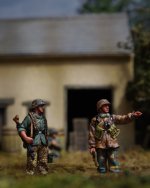
The first men jumped at 3.09 p.m., and the entire drop would be over in nine minutes, because the American formations had closed right up. Seven men would not be able to jump because they were injured in their aircraft, became entangled in static lines or fell over as some of the American pilots weaved to avoid the ground fire.
The best estimate of the numbers of men who actually jumped is 1,914.
It was an opposed drop.



Several planes were hit by small-arms fire; the SS were aiming at the doorways of the C-47s, hoping to hit the first man in the stick there, so that the remainder could not jump.

They also fired at the descending parachutists, spraying the air with bullets.
Getting orders to deploy ...

panda1gen
Lieutenant Colonel
- Joined
- Jul 29, 2005
- Messages
- 7,376
Ref: Arnhem - 1944: The Airborne Battle by M. Middlebrook
Here is a selection of experiences:
Private Jock Keenan of 156 Battalion:
The Second Lift
We could see the tracer coming up; possibly some of it even hit our plane, but no one was hurt. The tracer was quite close when we were in the air, and you could see some of the Germans on the edge of the trees. We had been told that it was going to be a quiet area, and it was a surprise to find them on the DZ.
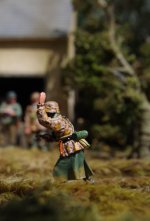
While I was in the air I could hear that one of the men further along, probably in my stick, had been hit. I went to help him when I landed, but Sergeant-Major *** told me to leave him and join my platoon - or words to that effect. Soon afterwards I heard that Sergeant Bill Walmsley had been killed, and his body was hanging in a tree. I had known him very well; we had knocked about together in India when we were friends there.
Private George Taylor of the 10th Battalion was the youngest soldier in his company:
“Because it was my first time in action and there was all this noise and the firing around the DZ, I came down any old how and got tangled up in my lift webs and hit the ground hard. My platoon sergeant said later that I had come down, 'like a bundle of ****'.
It was nice dropping on a training jump – an adventure - but when it was the actual thing, well, frankly, I was scared stiff. After I landed I lay down and cried, but then I got myself untangled and nipped over to the RV. I was OK after that”.
Signalman Arthur Winstanley of the Brigade Signal Section:
Among the varied paraphernalia attached to my person was a carrier pigeon in a box with a little bag of corn tied to it. However, there was only the half of the box with the bag of corn left, so I presume that the bird got a flying start at anywhere between 350 feet and the ground, hopefully getting back to England some seven months quicker than myself. I was about fifty feet from the ground and preparing myself for a landing when what must have been a light-calibre mortar bomb exploded ahead and to the right of me, killing another man just as he landed.
I came down awkwardly on a patch of ground that was on fire. My rigging lines became entangled with the handle of my entrenching tool and I had difficulty getting free from my 'chute; one of my colleagues came and cut me free, despite the fact that a burst of automatic fire tore up the ground between him and me. During my efforts to join up with my section, I witnessed two of the infantry lads who, in spite of the rubbish that was flying about, were busily engaged in trying to shoot a large hare that was bounding all over the place, no doubt with a view to supplementing their compo rations.
Corporal Fred Jenkins of the 10th Battalion:
There was smoke all around me and about five machine-guns firing; they sounded like German Spandaus - too sharp to be ours. Everything looked chaotic - a whole brigade moving off to about four different rendezvous points, but I couldn't see anybody I knew.

The bullets didn't seem to be coming my way, and anyway I couldn't crawl off the DZ, so I just pushed along in a crouching run as fast as I could. I saw a 'chute in flames and went to see if anyone was on it. There wasn't anyone there, but just then the heat proved too strong and fierce for the safety of a mortar bomb which was lying nearby. It exploded, and I ducked, **** quick. Lucky as usual. The man next to me shouted. I went along and found he'd had his nose blown off. I eased his equipment off and put a dressing on the wound. He could still talk and walk, so I dragged him along with me - had to hustle because there were more bombs lying about and they looked well toasted. My charge was a sergeant-major from 11th Battalion, and I handed him over as soon as I could.
Here is a selection of experiences:
Private Jock Keenan of 156 Battalion:
The Second Lift
We could see the tracer coming up; possibly some of it even hit our plane, but no one was hurt. The tracer was quite close when we were in the air, and you could see some of the Germans on the edge of the trees. We had been told that it was going to be a quiet area, and it was a surprise to find them on the DZ.

While I was in the air I could hear that one of the men further along, probably in my stick, had been hit. I went to help him when I landed, but Sergeant-Major *** told me to leave him and join my platoon - or words to that effect. Soon afterwards I heard that Sergeant Bill Walmsley had been killed, and his body was hanging in a tree. I had known him very well; we had knocked about together in India when we were friends there.
Private George Taylor of the 10th Battalion was the youngest soldier in his company:
“Because it was my first time in action and there was all this noise and the firing around the DZ, I came down any old how and got tangled up in my lift webs and hit the ground hard. My platoon sergeant said later that I had come down, 'like a bundle of ****'.
It was nice dropping on a training jump – an adventure - but when it was the actual thing, well, frankly, I was scared stiff. After I landed I lay down and cried, but then I got myself untangled and nipped over to the RV. I was OK after that”.
Signalman Arthur Winstanley of the Brigade Signal Section:
Among the varied paraphernalia attached to my person was a carrier pigeon in a box with a little bag of corn tied to it. However, there was only the half of the box with the bag of corn left, so I presume that the bird got a flying start at anywhere between 350 feet and the ground, hopefully getting back to England some seven months quicker than myself. I was about fifty feet from the ground and preparing myself for a landing when what must have been a light-calibre mortar bomb exploded ahead and to the right of me, killing another man just as he landed.
I came down awkwardly on a patch of ground that was on fire. My rigging lines became entangled with the handle of my entrenching tool and I had difficulty getting free from my 'chute; one of my colleagues came and cut me free, despite the fact that a burst of automatic fire tore up the ground between him and me. During my efforts to join up with my section, I witnessed two of the infantry lads who, in spite of the rubbish that was flying about, were busily engaged in trying to shoot a large hare that was bounding all over the place, no doubt with a view to supplementing their compo rations.
Corporal Fred Jenkins of the 10th Battalion:
There was smoke all around me and about five machine-guns firing; they sounded like German Spandaus - too sharp to be ours. Everything looked chaotic - a whole brigade moving off to about four different rendezvous points, but I couldn't see anybody I knew.

The bullets didn't seem to be coming my way, and anyway I couldn't crawl off the DZ, so I just pushed along in a crouching run as fast as I could. I saw a 'chute in flames and went to see if anyone was on it. There wasn't anyone there, but just then the heat proved too strong and fierce for the safety of a mortar bomb which was lying nearby. It exploded, and I ducked, **** quick. Lucky as usual. The man next to me shouted. I went along and found he'd had his nose blown off. I eased his equipment off and put a dressing on the wound. He could still talk and walk, so I dragged him along with me - had to hustle because there were more bombs lying about and they looked well toasted. My charge was a sergeant-major from 11th Battalion, and I handed him over as soon as I could.
panda1gen
Lieutenant Colonel
- Joined
- Jul 29, 2005
- Messages
- 7,376
Ref: Arnhem - 1944: The Airborne Battle by M. Middlebrook
Most of the German and Dutch SS withdrew before the drop came to an end, but the 10th Battalion found that the woods around their rendezvous near the Zuid Ginkel Cafe were still occupied, and a fierce little action took place when this area had to be cleared.
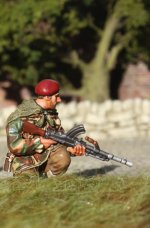
Several contributors mention the bravery of Lieutenant Pat Mackey.
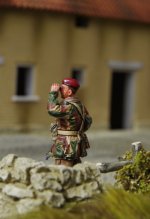
He was killed charging a machine-gun set up on a pile of logs.
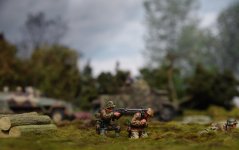
Private Ralph Shackleton came upon this officer's body after the area was secured:
I found Lieutenant Mackey dead in some trees just off the DZ. I put his inscribed gold ring into his mouth to prevent it being taken by the Germans.
Near him was a dying German. He was conscious and mumbling, and when I bent over him he put his hand out and rested it on one of my Bren magazine pouches. I gave him Lieutenant Mackey's morphia and left them lying together on the grass. I still feel the futility and sadness of that moment.
Parties of medical orderlies and stretcher-bearers searched the heath for the wounded ......
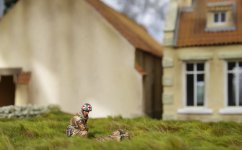
Most of the German and Dutch SS withdrew before the drop came to an end, but the 10th Battalion found that the woods around their rendezvous near the Zuid Ginkel Cafe were still occupied, and a fierce little action took place when this area had to be cleared.

Several contributors mention the bravery of Lieutenant Pat Mackey.

He was killed charging a machine-gun set up on a pile of logs.

Private Ralph Shackleton came upon this officer's body after the area was secured:
I found Lieutenant Mackey dead in some trees just off the DZ. I put his inscribed gold ring into his mouth to prevent it being taken by the Germans.
Near him was a dying German. He was conscious and mumbling, and when I bent over him he put his hand out and rested it on one of my Bren magazine pouches. I gave him Lieutenant Mackey's morphia and left them lying together on the grass. I still feel the futility and sadness of that moment.
Parties of medical orderlies and stretcher-bearers searched the heath for the wounded ......

panda1gen
Lieutenant Colonel
- Joined
- Jul 29, 2005
- Messages
- 7,376
Ref: It Never Snows in September - Robert J. Kershaw
The Germans by now had realised what the real targets for the allies were, the bridges. They had also realised that many of the initial reports of paratroop landings were incorrect, as the zones e.g. Utrecht, were merely flown over. This improved focus allowed a more organised response.
Kampfegruppen were formed ......
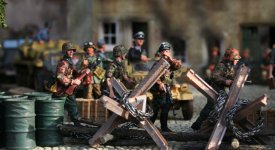
The Germans by now had realised what the real targets for the allies were, the bridges. They had also realised that many of the initial reports of paratroop landings were incorrect, as the zones e.g. Utrecht, were merely flown over. This improved focus allowed a more organised response.
Kampfegruppen were formed ......

panda1gen
Lieutenant Colonel
- Joined
- Jul 29, 2005
- Messages
- 7,376
Ref: Arnhem - 1944: The Airborne Battle by M. Middlebrook
A considerable proportion of the brigade did not drop on the heath. There were several reasons, but many were cases of overshooting when the last element of nine C-47s became separated from the main formation and dropped their sticks north of the correct place.
Some men came down in trees among the SS and were shot as they hung helplessly from their harnesses. Again, there are some good descriptions of these more distant drops; the 'Germans' in these accounts would often have been Dutch SS.

Private David Dagwell of 156 Battalion:
“I was about to follow the Quartermaster's batman out of the door when the plane tilted on one side. A shell had burst under the port wing, and those still to jump were thrown violently against the bulkhead opposite. When eventually we got out it was immediately obvious that the delay was going to lead to my landing in a belt of fir trees which ran along the eastern edge of the heath. Impact when it came was quite soft; branches cushioned my fall, and the 'chute rested firmly in the tree-tops. However, my rifle valise was caught up above my head, and the cord was well and truly wrapped around my legs so that I hung in a U-shaped position.
I was struggling to get my knife free, when a movement registered in the corner of my eye. I took a swift glance and wished I was elsewhere as three German soldiers made their way cautiously along a path below. At that moment I resembled nothing so much as a trussed chicken and would have been unable to defend myself if any of them had happened to look up.
Fortunately for me they were far more interested in the events on the DZ and, after what seemed an age, they disappeared round a bend. When I began breathing again I managed to draw my knife, cut through the cord, slap the release box and let go, to fall on to a soft carpet of pine needles. I thought about trying to recover the valise but decided that this was no time to hang around that neighbourhood”.
Driver John Prime of the RASC:
I landed in a tree - right at the top of it - and felt very exposed; there was firing going on nearby. I released the kitbag with the Bren and released myself from the harness, and eventually got down. I took the Bren and two pouches of ammunition but left the rest of the kitbag with the spare canvas wallet of Bren magazines and the Bren cleaning kit and my rations.
I shouldn't have, but I was alone in the trees and wanted to get to the DZ. I followed the direction of the firing. I heard others in the trees, but I was looking after Number One; we had expected an unopposed landing, and things were going wrong. I got out on to the open heath and made for the blue smoke of our platoon RV. There were several of us by then, running in an extended line - not running very fast really, because of our loads; we kept having to stop to take a breather.
The German fire was sweeping the whole DZ two or three feet above the ground. We were about a hundred yards across when one of the men was hit. He gave a huge gasp and fell down on to his face like a sack of potatoes. We all went to ground again. Tubby Ashman ran over to him (or shuffled; we were like Christmas trees), turned him over and said that he was dead. When we eventually got to the RV one of the lads there had been hit in the face, not seriously, but was in shock with his hands over his face covered with blood. Captain Kavanagh was squaring him up, telling him to pull himself together.
A considerable proportion of the brigade did not drop on the heath. There were several reasons, but many were cases of overshooting when the last element of nine C-47s became separated from the main formation and dropped their sticks north of the correct place.
Some men came down in trees among the SS and were shot as they hung helplessly from their harnesses. Again, there are some good descriptions of these more distant drops; the 'Germans' in these accounts would often have been Dutch SS.

Private David Dagwell of 156 Battalion:
“I was about to follow the Quartermaster's batman out of the door when the plane tilted on one side. A shell had burst under the port wing, and those still to jump were thrown violently against the bulkhead opposite. When eventually we got out it was immediately obvious that the delay was going to lead to my landing in a belt of fir trees which ran along the eastern edge of the heath. Impact when it came was quite soft; branches cushioned my fall, and the 'chute rested firmly in the tree-tops. However, my rifle valise was caught up above my head, and the cord was well and truly wrapped around my legs so that I hung in a U-shaped position.
I was struggling to get my knife free, when a movement registered in the corner of my eye. I took a swift glance and wished I was elsewhere as three German soldiers made their way cautiously along a path below. At that moment I resembled nothing so much as a trussed chicken and would have been unable to defend myself if any of them had happened to look up.
Fortunately for me they were far more interested in the events on the DZ and, after what seemed an age, they disappeared round a bend. When I began breathing again I managed to draw my knife, cut through the cord, slap the release box and let go, to fall on to a soft carpet of pine needles. I thought about trying to recover the valise but decided that this was no time to hang around that neighbourhood”.
Driver John Prime of the RASC:
I landed in a tree - right at the top of it - and felt very exposed; there was firing going on nearby. I released the kitbag with the Bren and released myself from the harness, and eventually got down. I took the Bren and two pouches of ammunition but left the rest of the kitbag with the spare canvas wallet of Bren magazines and the Bren cleaning kit and my rations.
I shouldn't have, but I was alone in the trees and wanted to get to the DZ. I followed the direction of the firing. I heard others in the trees, but I was looking after Number One; we had expected an unopposed landing, and things were going wrong. I got out on to the open heath and made for the blue smoke of our platoon RV. There were several of us by then, running in an extended line - not running very fast really, because of our loads; we kept having to stop to take a breather.
The German fire was sweeping the whole DZ two or three feet above the ground. We were about a hundred yards across when one of the men was hit. He gave a huge gasp and fell down on to his face like a sack of potatoes. We all went to ground again. Tubby Ashman ran over to him (or shuffled; we were like Christmas trees), turned him over and said that he was dead. When we eventually got to the RV one of the lads there had been hit in the face, not seriously, but was in shock with his hands over his face covered with blood. Captain Kavanagh was squaring him up, telling him to pull himself together.
panda1gen
Lieutenant Colonel
- Joined
- Jul 29, 2005
- Messages
- 7,376
Ref: Arnhem - 1944: The Airborne Battle by M. Middlebrook
Corporal David Jones of 156 Battalion:
One of the relatively new men in the battalion refused to jump and froze in the doorway. An RAF despatcher would have given him a boot in the rear, but the American crew chief didn't, and there was a long delay before he was pulled away.
Myself and five others all jumped into woodland beyond the DZ. I fell into a tree and was swaying like a pendulum just above the ground; I couldn't unfasten the release catch because of my weight, so I cut the rigging lines. We were among a German platoon, but they ran off.
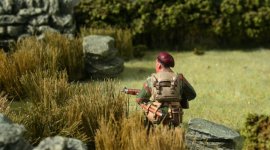
We took one prisoner, and I made him carry the 2-inch mortar bomb carriers; I wasn't bothered about international law and prisoners of war carrying ammunition.
Then we found a truck loaded with German ammunition and weapons. I realized that I had a prize here. Airborne troops were always short of vehicles and ammunition, and here we were, just landed and with a vehicle loaded with ammunition; our Sten guns were designed to use the German rimless 9-millimetre ammunition.

I told the lads to jump on the truck and I had visions of driving off to the Company RV with some transport and a load of ammunition. I had no bother driving it; as a Channel Islander I was used to going to France and driving right hand drive vehicles. I was chuffed; I thought I'd landed on a gold mine.
I knew Major Waddy would be pleased - but it didn't turn out that way.
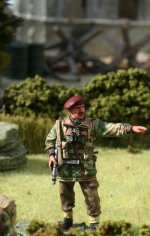
The first people I met were some KOSBs, and their officer told me to unload the ammunition and drive his wounded to the field hospital in Oosterbeek. I never rejoined the battalion, they kept me and the vehicle at Oosterbeek carrying wounded.
(Later in the week, Corporal Jones suffered five bullet wounds when his German vehicle was accidentally shot up by British troops at Oosterbeek.)
https://kosb.co.uk/events-news/archive-news/arnhem-1944/
Corporal David Jones of 156 Battalion:
One of the relatively new men in the battalion refused to jump and froze in the doorway. An RAF despatcher would have given him a boot in the rear, but the American crew chief didn't, and there was a long delay before he was pulled away.
Myself and five others all jumped into woodland beyond the DZ. I fell into a tree and was swaying like a pendulum just above the ground; I couldn't unfasten the release catch because of my weight, so I cut the rigging lines. We were among a German platoon, but they ran off.

We took one prisoner, and I made him carry the 2-inch mortar bomb carriers; I wasn't bothered about international law and prisoners of war carrying ammunition.
Then we found a truck loaded with German ammunition and weapons. I realized that I had a prize here. Airborne troops were always short of vehicles and ammunition, and here we were, just landed and with a vehicle loaded with ammunition; our Sten guns were designed to use the German rimless 9-millimetre ammunition.

I told the lads to jump on the truck and I had visions of driving off to the Company RV with some transport and a load of ammunition. I had no bother driving it; as a Channel Islander I was used to going to France and driving right hand drive vehicles. I was chuffed; I thought I'd landed on a gold mine.
I knew Major Waddy would be pleased - but it didn't turn out that way.

The first people I met were some KOSBs, and their officer told me to unload the ammunition and drive his wounded to the field hospital in Oosterbeek. I never rejoined the battalion, they kept me and the vehicle at Oosterbeek carrying wounded.
(Later in the week, Corporal Jones suffered five bullet wounds when his German vehicle was accidentally shot up by British troops at Oosterbeek.)
https://kosb.co.uk/events-news/archive-news/arnhem-1944/
StudioParisArt
Private 2
- Joined
- May 16, 2025
- Messages
- 84
Nice to see a Horsa, and glimpse the Armstrong Whitworth Albermarle (??) or is it a Mitchel?? towing aircraft, rarely seen in 1/32 Scale. There was NO US support, but only indifferent support for Bernard Law Montgomerys operation. And the Radio crystals were the wrong type, leading to NO radio communication with HQ and letting the Germans slip in the rear of the Paratroopers and surround them...Sheer ignorance of Intelligence information from the "Ling" the Dutch Underground Resistance, about the prescence of enemy heavy armour in the drop area, (because a while before the Gestapo had infiltrated the Ling) led to tragedy. In my old town when I was growing up there lived a man, one of the survivors who actualy crossed back over the river right at the end, Mr Alfie Taylor. He was never ever the same man againa fter being parachuted into Arnhem. Monty claimed the operation was 95 % successfull....but then Top Brass Brigade always have one fudgeed up Barmoeter for success....In September 1944, Market Garden was launched against the retreating Wehrmacht consisting of old men and bicycles, to 'bounce' across the major river obstacles into Germany through Northern Holland and end the war before Christmas by taking the Ruhr industrial area from behind.
Three airborne divisions, US 101 and 82 plus the previously untried 1st British Airborne (they missed out on D Day) were dropped as an airborne carpet, taking and holding key roads and bridges on route.
British 30 Corps were to relieve them by puching through stiff resistance based on defences across canals in Northern Belgium and Southern Holland, driving down the road through Eindhoven, Nijmegen and Arnhem - a massive operation, becoming more complex as the Germans demonstrated yet again their amazing ability to regroup and fight flexibly in 'kampfegruppe', wherever the threat appeared.
Allied aircover was not as dominant as normal, due to the fact that Holland was covered in Luftwaffe flak units as it was on the main bomber route into Germany. The weather was also a factor with fog.
Finally, the German Falschirmjager had tried a similar move in 1940 against the relatively small Dutch Army - although it had the element of complete surprise and was successful, they still took fairly heavy casualties.
And so it begins............allied medium bombers prepare on British airfields, and 1st Airborne begin to load in the massive Horsa Glider.
panda1gen
Lieutenant Colonel
- Joined
- Jul 29, 2005
- Messages
- 7,376
Nice to see a Horsa, and glimpse the Armstrong Whitworth Albermarle (??) or is it a Mitchel?? towing aircraft, rarely seen in 1/32 Scale. There was NO US support, but only indifferent support for Bernard Law Montgomerys operation. And the Radio crystals were the wrong type, leading to NO radio communication with HQ and letting the Germans slip in the rear of the Paratroopers and surround them...Sheer ignorance of Intelligence information from the "Ling" the Dutch Underground Resistance, about the prescence of enemy heavy armour in the drop area, (because a while before the Gestapo had infiltrated the Ling) led to tragedy. In my old town when I was growing up there lived a man, one of the survivors who actualy crossed back over the river right at the end, Mr Alfie Taylor. He was never ever the same man againa fter being parachuted into Arnhem. Monty claimed the operation was 95 % successfull....but then Top Brass Brigade always have one fudgeed up Barmoeter for success....
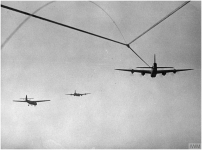
Ref: Wikipedia
Specifications (AS.58 Mark II)
Data from Fighting Gliders of World War II, British Warplanes of World War II, BAE Systems
General characteristics
- Crew: Two
- Capacity: 28 troops / 2x ¼ton trucks / 1x M3A1 Howitzer + ¼ton truck with ammunition and crew / (20–25 troops was the "standard" Mark I load)
- Length: 67 ft 0 in (20.42 m)
- Wingspan: 88 ft 0 in (26.82 m)
- Height: 19 ft 6 in (5.94 m)
- Wing area: 1,104 sq ft (102.6 m2)
- Aspect ratio: 7.2
- Airfoil: root: NACA 4419R 3.1;
- tip: NACA 4415R 3.1
- Empty weight: 8,370 lb (3,797 kg)
- Gross weight: 15,750 lb (7,144 kg)
Performance
- Cruise speed: 100 mph (160 km/h, 87 kn) normal operational gliding speed
- Aero-tow speed: 150–160 mph (130–139 kn; 241–257 km/h)
- Stall speed: 48 mph (77 km/h, 42 kn) flaps down - 58 mph (50 kn; 93 km/h) flaps up
- Wing loading: 14 lb/sq ft (68 kg/m2)
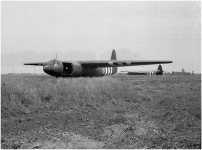
The K&C models are a Horsa and Boston from Louis' collection (still used as a medium bomber in 1944 I believe).
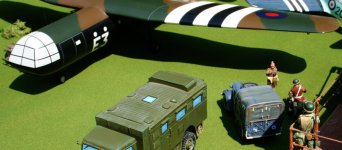
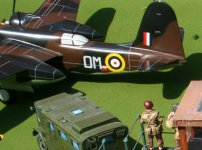
StudioParisArt
Private 2
- Joined
- May 16, 2025
- Messages
- 84
Amazing thing the HORSA. The DH Mosuito was not the only "wooden wonder" of the War... It carried out the finest piece of operational flying of the entire war, by landing within fifty yards of the enemy positions at the Orn Canal bridge in the dead of night before D Day....and the enemy new nothing....
panda1gen
Lieutenant Colonel
- Joined
- Jul 29, 2005
- Messages
- 7,376
Ref: Arnhem - 1944: The Airborne Battle by M. Middlebrook
Some men were dropped so far north that they were never able to reach friendly forces. Private Ken Kirkham provided a description of how seventeen men of the 10th Battalion came down well beyond the dropping zone and carried out various irregular operations until, with only six men still together, he met up with a Dutch escape organization.
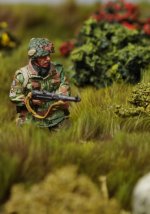
The most distant of the drops in the north were by at least three sticks of men who dropped near Otterlo, eight miles beyond the DZ. Two sticks were from 133 Parachute Field Ambulance under that unit's second in command, Major Brian Courtney, and the third was from the 4th Parachute Squadron.
Two of these parties joined and had a little fight with a German patrol in which an RASC driver with the Field Ambulance and possibly other men were killed.
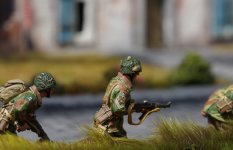
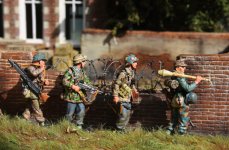
None of these men rejoined the division, and, although most avoided capture, the medical unit would be deprived of the much needed services of a surgeon, two other medical officers and several orderlies.
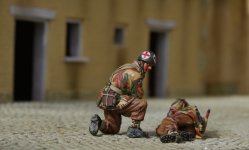
The American planes flew away. Lieutenant Bernard Coggins, one of the navigators in the lead plane of the 315th Troop Carrier Group, writes:
I don't know just what hell will be like, but I think we got a preview. Earlier groups had already dropped, and the DZ was a solid ball of fire. At the command to jump, our troops had exited from the plane without any hesitation. My admiration, already at an extremely high level where paratroopers were concerned, went even higher as these brave men dropped into that preview of hell. We immediately pushed the throttles to the firewall, hit the deck and got the hell out of there. The tales about that mission lasted a long, long time.
None of the American planes was shot down on the return flight.
Some men were dropped so far north that they were never able to reach friendly forces. Private Ken Kirkham provided a description of how seventeen men of the 10th Battalion came down well beyond the dropping zone and carried out various irregular operations until, with only six men still together, he met up with a Dutch escape organization.

The most distant of the drops in the north were by at least three sticks of men who dropped near Otterlo, eight miles beyond the DZ. Two sticks were from 133 Parachute Field Ambulance under that unit's second in command, Major Brian Courtney, and the third was from the 4th Parachute Squadron.
Two of these parties joined and had a little fight with a German patrol in which an RASC driver with the Field Ambulance and possibly other men were killed.


None of these men rejoined the division, and, although most avoided capture, the medical unit would be deprived of the much needed services of a surgeon, two other medical officers and several orderlies.

The American planes flew away. Lieutenant Bernard Coggins, one of the navigators in the lead plane of the 315th Troop Carrier Group, writes:
I don't know just what hell will be like, but I think we got a preview. Earlier groups had already dropped, and the DZ was a solid ball of fire. At the command to jump, our troops had exited from the plane without any hesitation. My admiration, already at an extremely high level where paratroopers were concerned, went even higher as these brave men dropped into that preview of hell. We immediately pushed the throttles to the firewall, hit the deck and got the hell out of there. The tales about that mission lasted a long, long time.
None of the American planes was shot down on the return flight.
StudioParisArt
Private 2
- Joined
- May 16, 2025
- Messages
- 84
Crazy but true, if it were built and they wanted to fly it today, the C.A.A would NOT grant them a Licence of Airworthiness to a Horsa....
I always felt the Horsa was the best of the three main Allied Gliders, the US WACO G4 Glider had a nasty habit of turning nose upside down on landing....
I always felt the Horsa was the best of the three main Allied Gliders, the US WACO G4 Glider had a nasty habit of turning nose upside down on landing....
StudioParisArt
Private 2
- Joined
- May 16, 2025
- Messages
- 84
Voila avec le premier place Libere dans la France de D Day, le Cafe GONDRE le autre cote de cette pont...Amazing thing the HORSA. The DH Mosuito was not the only "wooden wonder" of the War... It carried out the finest piece of operational flying of the entire war, by landing within fifty yards of the enemy positions at the Orn Canal bridge in the dead of night before D Day....and the enemy new nothing....
Amazing thing the HORSA. The DH Mosuito was not the only "wooden wonder" of the War... It carried out the finest piece of operational flying of the entire war, by landing within fifty yards of the enemy positions at the Orn Canal bridge in the dead of night before D Day....and the enemy new nothing....
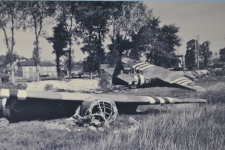
HORSA Gliders after the battle at the Orn Canal and Caen river Bridges. Normandie 1944
Users who are viewing this thread
Total: 3 (members: 0, guests: 3)


